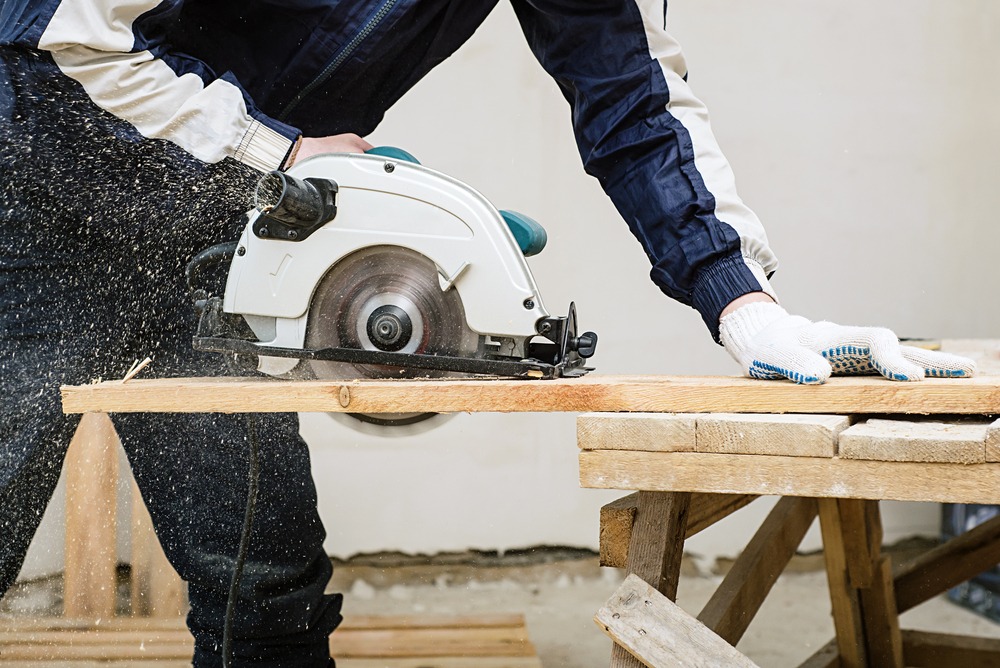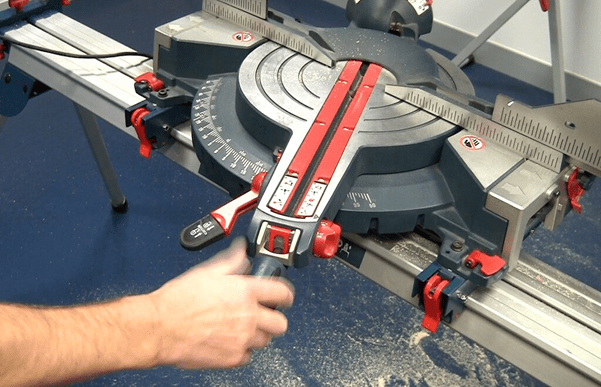A circular saw is probably the most versatile woodworking tool today. Enhanced by various improvements like handheld form factor, LED lamps to light up the area, and adjustable speed, a circular saw can perform multiple tasks.
Especially when used with accessories, like a circular saw guide rail or a vacuum to collect the dust as it appears.
The choice of various saws is great today, by famous manufacturers and those that only begin, made for thick or thin wood, with replaceable components (not only blades), compatible with different accessories.
Which would you choose?
Sawing in Circles: What’s Done with a Circular Saw?
While probably you have seen this tool in action or maybe even used it, you know the principle. The saw, handheld itself, is used to operate on a fixed workpiece of wood while the operator moves along to make various cuts.
As you move along, you cut the material further than you could have reached with a stationary saw, and so you make more precise cuts. The built-in adjustments let you choose the depth of the cut, the speed of the blade,
There are many enhancements for the table saw experience. You can connect a vacuum to it to remove the dust that inevitably appears near the cut. A LED lamp lights up the area, so you should not be afraid you’ll cover the sun or the lamp.
A brake makes stops smoother, preventing damages. Guides are meant to make long, precise cuts. In short, a modern circular saw is the ultimate woodworking tool.
Saws in Numbers
Well, various parameters matter when you are choosing your saw. Let’s take a look.
- Weight. It’s a matter of comfort, first of all. A heavier saw isn’t necessarily more powerful: a battery of a cordless one adds much to the weight (more on it below).
- RPM. It indicates the speed of the blade rotation, and in general it should also influence the power of the saw and the speed of its movement through the material. Generally, while you use the same blade, it’s so. But using different ones also matters.
Advanced models have adjustable RPM, which is useful if you plan to cut various materials, but if you’re good with wood, this feature is not crucial.
- Blade diameter. Usually, saws are compatible with various blades. In general, the thicker is the material you cut, the larger blade you need. And yes, it impacts the RPM: the smaller the blade, the higher is the RPM required. Consider what materials you’re going to work with to choose the blade and then the RPM.
- Price. We guess its importance does not require an explanation. Still, you may be lucky to run into a cheap but quality version of an overpriced item.
Construction Type
What do you prefer: worm drive or sidewinder drive? The difference is that worm drive saws have their motor on the back, in line with the blade, producing more power and enabling the saw to do rougher work.
Sidewinder-type saws have a motor on one side, making them lightweight and stable. In this situation, though, you better let your hands do the choosing.
Power Type
There are both corded and cordless circular saws around, and the choice is not that obvious. It may seem that a battery-operated one will be more comfortable to use, with no cord hanging behind it and no need to have a socket around.
But a saw needs a strong battery – not the type that powers your smartphone: just compare the vibration level! That’s why a cordless saw is usually both heavier and weaker than a corded one, their price being equal.
So, the choice depends on both what you do with the saw and where you do it. A battery-operated one is great for outdoor work.
However, if you have a great workshop at home, with lights, cord-holders, and sockets, a corded one may be better.
Does Size Matter?

The size depends on your comfort, which does matter with such a powerful tool in your hands. That’s why it’s recommended you try the saw offline at least once – both the saw alone, and along with the accessories you plan to use. It should feel solid but not too heavy.
Of course, it also depends on the type of work you intend to perform. Fine work with thin boards will require less power and a lighter circular saw.
If you’re processing heavy boards and logs, you will need a weapon of a saw. You will probably need two of them, a compact one for the finest work and a rough, powerful monster to cut thick wood.
Vendors, Accessories and Ecosystems
Should you spend more on a saw by Makita, DeWalt, or another famous brand? Or is it worth it to save a buck or two on a Chinese imitation?
The answer is not clear, but here are some considerations:
- If you need a saw to work a lot, you better get one by an A-brand. Being solidly built and properly tested, it should tolerate the conditions specified in the manual.
- If you need this sort of saw once in a while, not too often, well, you can risk it and try a cheaper one by a no-name manufacturer. But it can fail the moment you least expect it.
- After you buy the saw, you will need compatible accessories. Brands like Makita, BOSCH, DeWalt, and other major manufacturers offer wide arrays of them. As for the less known ones, you may have to search for them in vain… except the vendor has enough chutzpah to copy a popular model with all due precision. Then original accessories will still be compatible.
- If you’re not sure whether you’re seriously into woodworking, you may opt for buying a cheaper one. But many say there is a real joy in using quality tools, the sort you may miss.
The main reason to choose tools by well-established brands, though, is safety. Incidents with circular saws can severely damage the operator’s health.
To minimize these risks, it’s better to stick to manufacturers that grant quality.
That’s What We Saw!
The deeper you are into woodworking, the more you will learn about tools, saws in particular. Everyone has something, to begin with, though. We hope these recommendations will help you to choose your first circular saw and enjoy using it.
Share this article on Facebook or Twitter to discuss it with your friends who may be interested too or have more experience – or leave a comment here to add something we might have missed!



Comments are closed.